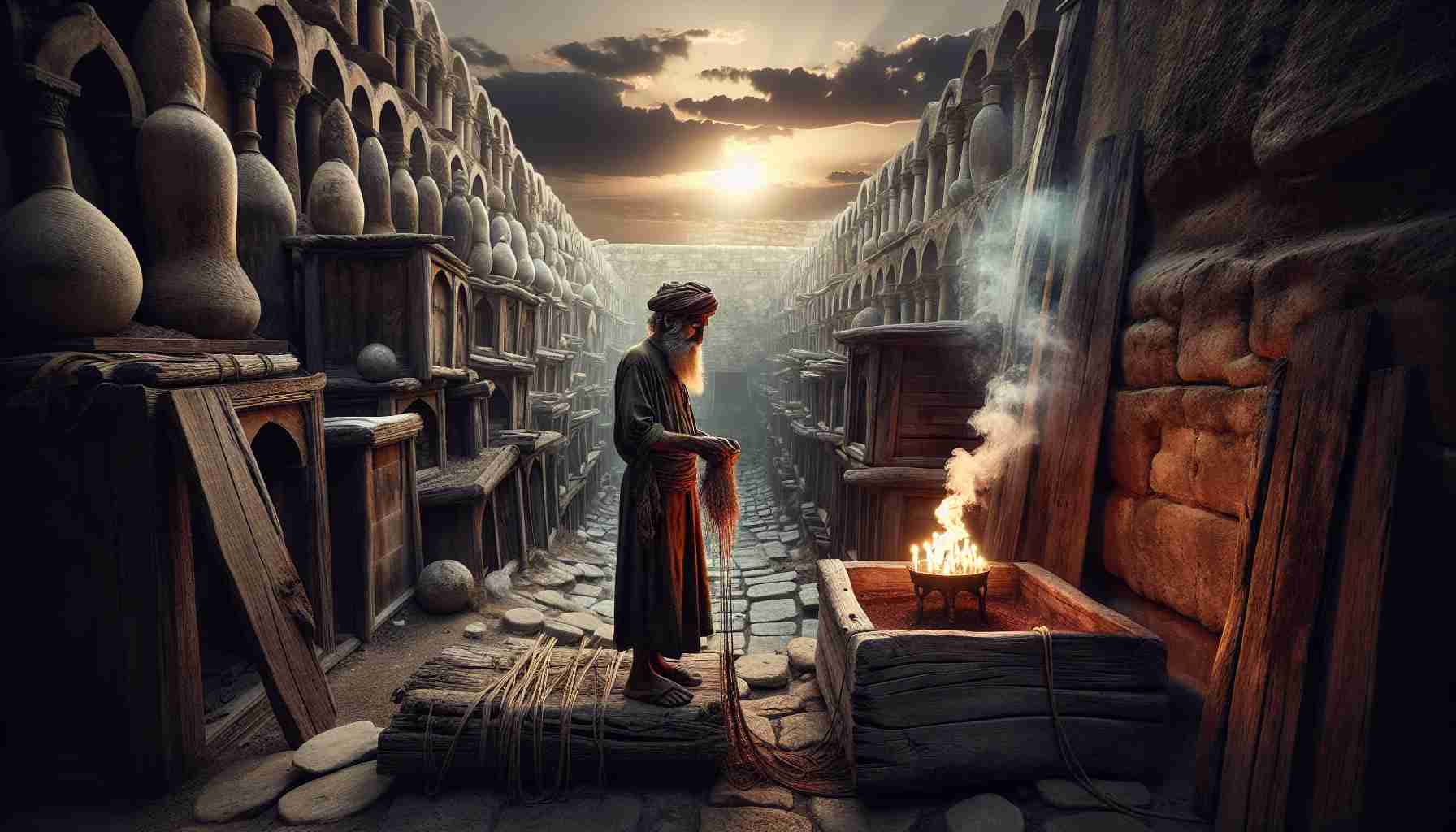

The scent of dust and incense clung beneath the Roman sun, heavy over the worn cobblestones of the Vatican hillside. There, in the heart of Nero’s Rome, beneath the shadow of the gardens where Christians burned like torches against twilight skies, a fisherman faced his final hour.
His callused hands, once rough from Galilee’s nets, were bound in ropes stained from others who had walked this path. Time had weathered him — not weakened, but hardened in resolve. The Apostle Peter, once named Simon, stood at the brink of execution.
This was no ordinary criminal. His voice had thundered across Jerusalem, then Antioch, and now Rome. And for that, Nero would make a spectacle of Christ’s so-called “rock.”
The place of death rose westward, near the spina of Nero’s circus. Beneath it, the old Vatican necropolis whispered old pagan rites, its tombs and mausoleums watching mute as new blood watered ancient soil. Here, the living stones of a new faith would be laid — not in grandeur, but beneath the hooves of empire.
Peter had foreseen this. He remembered the Lord’s words by the Sea of Galilee, when the Risen Christ had said: “When you are old, you will stretch out your hands…and someone else will dress you and lead you where you do not want to go” (John 21:18). And so it had come.
Above the roar of the city, the soldiers hauled the cross. Peter shuffled, recalling the Messiah’s charge: “You are Peter, and on this rock I will build my church; and the gates of Hades will not overcome it” (Matthew 16:18). He had not understood it then. He had feared water and denied Christ thrice by firelight. Yet grace had restored him. And now, grace would glorify him.
He made only one request: “Crucify me upside-down, for I am not worthy to die like my Lord.”
The Romans laughed. It mattered little to them if the condemned begged to hang by the ankles. But to Peter, it mattered eternally.
They turned the cross. The beam groaned as it was dropped into its socket. Rome watched, indifferent. Yet above this site of death, winds stirred over the Tiber, and far beyond, the heavens kept record.
The ground received him.
Years later, amidst persecution and ruin, believers remembered. They buried his body quietly in the necropolis, under a shallow monument marked by tiles and bones.
Historians — centuries after — would argue. Some said he never reached Rome. Others claimed confusion in early texts. Yet archaeology unearthed truths that legend alone had preserved: beneath the high altar of St. Peter’s Basilica, beneath Michelangelo’s dome and pilgrim feet, lay a grave lined in marble and purple cloth, where revered bones bore traces of ancient soil. Graffiti etched in the red Roman wall behind whispered simply: PETROS ENI — “Peter is here.”
The Basilicas that followed — Constantine’s in the 4th century, then Bramante’s, Michelangelo’s — crowned the place with splendor. But the foundation was blood.
For Peter, the rock, had laid himself down.
He had not won battles. He held no scepter. And yet from his death rose a church neither sword nor Caesar could silence.
Each Eucharist held there — in the shadow of his tomb — echoed Christ’s promise: “On this rock…” Not on might, but on witness. Not on power, but on love unto death.
And even now, when the stones of St. Peter’s gleam in dawn’s gold, they remember the man crucified upside-down. The man who wept for his denial and fed the flock in Rome. The man whose final breath built an altar.